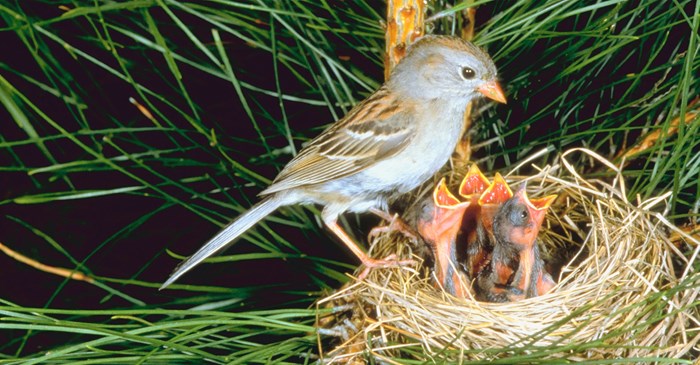This backyard scene will please just about everyone: A nest of softly piping baby birds, their broad beaks and naked heads turned upward, poised for food. As your backyard brood grows, minimize disturbances to the nest and enjoy watching from a safe distance with a pair of binoculars.
Nest building
In North America, most birds nest between March and August. Birds will choose trees, large shrubs, birdhouses, the ground, the side of a cliff, or the eaves of a house or some other man-made structure. Females are the main nest builders, using both natural and man-made materials like grass, leaves, mud, fur, paper, plastic and yarn. Males either help or guard the female against male suitors.
Incubation
Songbirds will lay about one egg a day, starting incubation right before or after the final egg is produced. Many species take turns sitting on the eggs, chirping an alert for the mate when leaving for a break. If you hear rapid chirping and see a very agitated bird, you may have ventured too close to a nest. That’s your cue to move to another spot!
Nestlings
Born naked and blind, helpless except for their ability to raise their beaks and beg for food, nestlings of songbirds will double in body weight 10 days after hatching. This is the easiest time to spot (from safe distance) a nest of newly hatched babies, because the parents will fly in and out of the nesting area around the clock, bringing food to their babies.
Fledgling
Most songbirds are ready to hop off the nest and learn to live on their own two to three weeks after hatching. If you see a clumsy young bird on the ground, it is, most likely, a fledgling. Its parents are probably close by and keeping an eye on you, so it is best to leave it alone.
A full feeder will help parent birds working around the clock to care for their nestlings get the protein and nutrition they need to keep going. Choose from a wide assortment of high-quality, nutritious blends of seeds and nuts offered by Lyric Bird Food.
